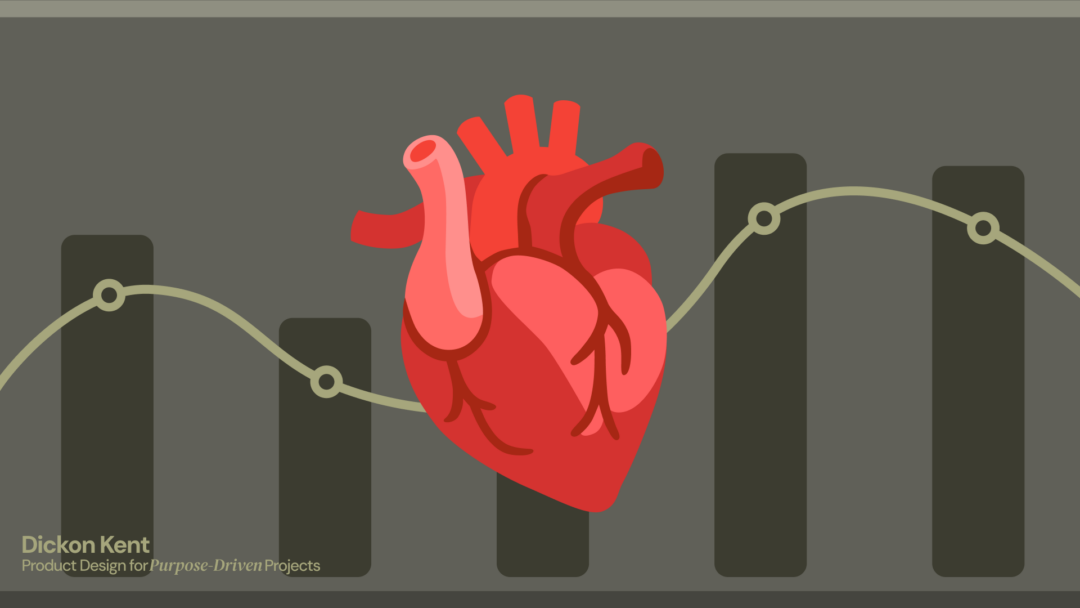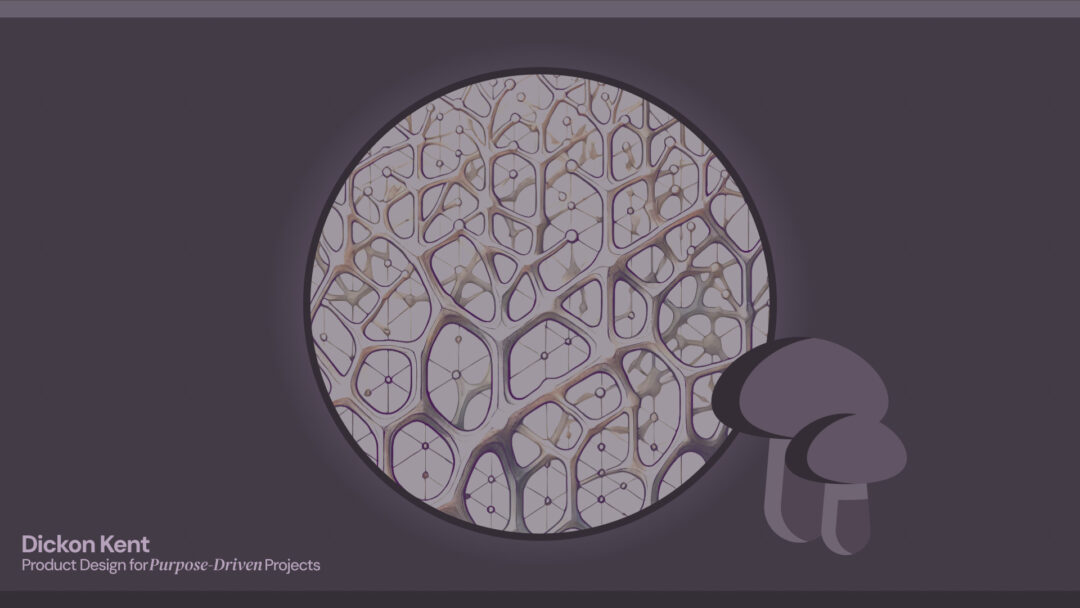
Attention Isn’t the Goal. Impact Is.
At this point in time it’s no secret that we live amongst an attention economy and the repercussions are pervasive throughout global social and cultural structures. Every app, every brand, every platform is locked in a battle for your time and attention. Algorithms optimize for engagement, often the fuel being whatever is the most inflammatory topic of the day. Clicks are currency. But in the race to capture attention, we’ve lost sight of something much more important: impact that matters.
The problem is, attention doesn’t mean anything on its own. A post that gets a million views but changes nothing is just noise. A company that gets endless engagement but builds nothing of substance is just another fleeting trend waiting to be replaced by the next one. We’ve been taught to believe that visibility equals success (in fact, that belief is partly why I am writing this), but what’s the point if nothing meaningful comes from it?
I see this everywhere, especially in product design, which really is business design when you break it down. Founders obsess over increasing retention rates and time-on-site, measuring success by how long they can keep people hooked. But what if real success isn’t about keeping users inside your product, but about making their lives better once they leave? The metrics for success need to change.
In today’s business world, worshipping at the altar of Wall Street takes priority over building something with purpose. I first saw a different way when I was a ten year old kid in London. Around that time the Sex Pistols were shocking the culture and Anita Roddick’s Body Shop redefined what a business could be. She wasn’t just selling skincare. She was building a company that cared about sustainability, ethical sourcing, and human well-being. She proved that business could be a force for good, and she was incredibly successful at it. That trajectory is documented beautifully in her book: Business As Unusual. But time and again, we’ve watched that ethos get overshadowed by short-term profit and engagement-at-all-costs thinking.
Think about the products that truly changed the way people work. The ones that solved a problem so well, they became essential tools. They didn’t win because they engineered addiction. They won because they created undeniable value.
And then, well…
Facebook (Before It Became an Ad-Driven Attention Trap)
At first, Facebook was a great way to stay connected. You could see what your friends were up to, share updates, and occasionally poke someone for no reason at all. It felt like a digital town square, where interactions were real and organic.
Then, the business model kicked in. Engagement became the priority, not connection. Algorithms started feeding you whatever would keep you scrolling the longest, whether it was outrage, sensationalism, or the tenth engagement announcement from that one person you barely know. What was once a tool for connection turned into an engineered dopamine casino, optimizing not for meaningful relationships but for ad revenue. Who wins? Not the users, not you and I, not in the long run.
Google Search (Before Ads Took Over Everything)
Google started as a beautifully simple idea: help people find the best answers to their questions. No frills, no nonsense—just relevance and speed. It won because it worked.
But search today? You’re lucky if you get to an actual organic result without scrolling past an ocean of paid placements, AI-generated fluff, and SEO-gamed nonsense. The original mission of “organizing the world’s information” has been slowly overtaken by “maximizing ad revenue.” The internet’s most powerful gateway is now a toll road, and we’re all paying for it in time and frustration.
Slack (Before It Became a Notification Nightmare)
Slack was a game-changer for workplace communication. It replaced endless email threads with quick, focused conversations. Teams moved faster, collaboration felt easier, and we all rejoiced in our newfound productivity.
Until, of course, Slack became too good at keeping us engaged. Pings. Notifications. @mentions. Endless channels. It went from being an email killer to recreating email’s worst qualities—just with better UI. Now, instead of inbox overload, we have notification fatigue. And somehow, we’re all more distracted than ever.
But I Don’t Want to Get Too Nihilistic About It
At this point, I could say, “And this is why everything is terrible and nothing good can last!” But that would be a bit dramatic and without nuance.
Not every product is doomed to this fate. I’d like to think some companies (i.e: B Corps, PBC’s, and founders who are tired of the same old, same old) still make choices that prioritize actual value over just squeezing more attention (and money) out of users. And maybe—just maybe—we, as designers and business owners can do the same.
If we stop designing for addiction and start designing for impact, maybe we can build things that actually make people’s lives better instead of just keeping them busy. The question is: are we brave enough to do it? I think we are. I think we have to. When things break, human beings are great at fixing them. But like the frog in the boiling pot, when do we truly realize it’s getting hot in here?
The companies that matter, the ones people remember, don’t just take up space. They give something back. And that’s the shift we need now.
How Impact Can Be Measured Instead of Attention
If we’re serious about moving past the attention economy, we need a different way to measure success. That means replacing vanity metrics—likes, clicks, time-on-site—with indicators that reflect real-world value. This should be inherent in product design, and sustainable business design, and maybe more importantly, communicated to the users. Talking about this stuff is important. If you don’t reach to turn on the light, it remains dark.
1. Customer Success & Outcomes
Instead of asking, “How many people are using this?” ask, “How well are they using it?” A product’s success isn’t about how long someone spends in it, but how effectively it helps them solve a problem. If people can accomplish what they set out to do faster, with less friction, that’s impact. Not only the perceived value increase, but the real value increases.
2. Word-of-Mouth & Organic Growth
A brand that makes a difference doesn’t need to manipulate engagement—it earns trust. When people share your product, service, or content because it genuinely helped them, that’s worth more than any paid campaign. Instead of measuring social reach, look at referral rates and unsolicited testimonials.
3. Long-Term Retention & Depth of Use
It’s easy to make something addictive. It’s harder to make something essential. A product that people continue using not because they feel trapped, but because it genuinely makes their life or work better, is a product that’s built to last.
4. Real-World Change & Measurable Improvements
Are you making an actual difference in people’s lives or just capturing their attention for a moment? If you’re in software, are your users getting better results? If you create content, are people applying what you share in ways that change how they work or think or even love? These are the things that matter.
5. User Stories & Case Studies
Forget the number of downloads or impressions. What’s more compelling is a real story of how your work helped someone in a meaningful way. Impact isn’t about how many people see what you do—it’s about what happens after they see it.
6. Community & Ecosystem Contribution
Businesses that last don’t just take. They contribute. Does your work inspire new ideas? Does it create a ripple effect beyond its immediate users? Are you adding something of substance to your industry, or just adding more noise?
7. Sustainability & Ethical Impact
Impact isn’t just about business success. It’s about how a company treats its employees, customers, and the world around it. Are you making people’s lives better—or just making numbers go up? There’s nothing wrong with numbers going up, but at what real cost?
Rethinking What Success Looks Like
This isn’t just about redefining metrics. It’s about rethinking what we value in business at all. The alternative is the same cycle we’ve seen before, an endless pursuit of more, regardless of what it costs.
In my humble (and unsolicited) opinion, the companies that will be the best for the lives of our children and their children and so on, the best ideas, and the best leaders don’t just chase attention. They create something that lasts for a reason. And if the statistics about employees valuing impact as much as, or more than compensation, then, it would be wise for companies that want to improve workplace satisfaction to adopt this mindset.
It starts with the choices we make. The features we prioritize. The way we define success inside our own businesses, and what we prioritize in our own lives. If enough of us start measuring the right things, maybe we shift the tide.
The question isn’t how many people are looking at you. The question is, when they do, what do they walk away with?


